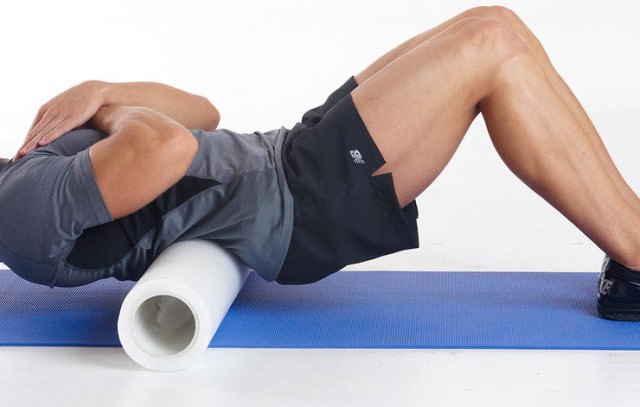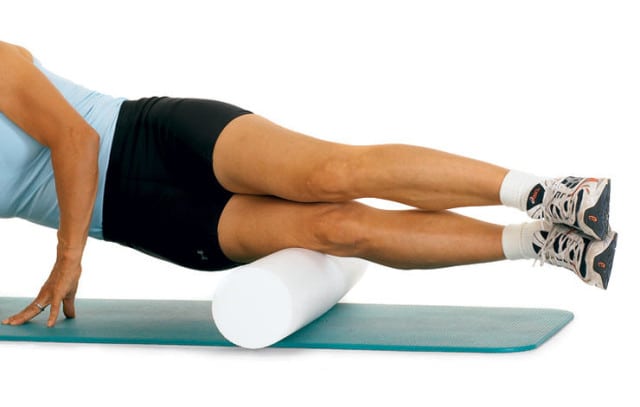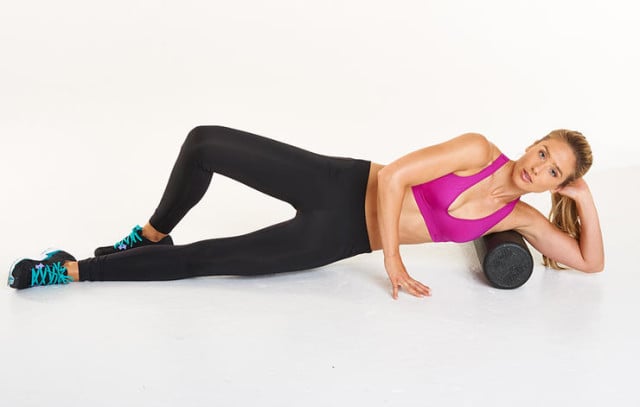Foam Rolling? Do It Right by Avoiding These 10 Mistakes
Don’t overdo it with the self-massage tool.
Despite the foam roller’s popularity, it “shouldn’t be considered the silver bullet for at-home therapy,” says sports chiropractor, Richard Hansen. Hansen, who treats recreational runners as well as Olympians, warns that incorrect use may cause muscle damage.
Doug Perkins, a physical therapist and certified strength and conditioning specialist also based in Boulder, agrees: “Runners should understand why, when and how foam rolling should be used before getting started.”
Here are 10 mistakes these experts recommend against, as well as suggestions for safe and effective foam rolling:
Foam Rolling Without Reducing Adhesions First

Why it’s bad: Perkins warns that foam rolling won’t be as effective if you don’t properly address and reduce your adhesions – also known as knots – beforehand.
What to do instead: Adhesions can be addressed using the foam roller itself: just place it under the pressure point and press your weight down until you feel the tension ease. Or, if the tightened area is small and more localised, a targeted tool – like a massage ball, tennis ball or lacrosse ball – can do the trick. Once the knots are loosened, lengthen out the muscle by gently rolling it across the foam roller for about 30 to 90 seconds.
Waiting to Foam Roll Until After Exercise

Why it’s bad: While Perkins notes that the research is still mixed on the ideal time to roll, he recommends both pre- and post-workout sessions. The reason: jumping straight into a workout without proper tune ups can put you at risk for pulling on those adhesions and making pain worse. Plus, pre-run foam rolling lengthens out your muscles, which can help improve your performance.
What to do instead: Set aside an extra five to ten minutes before your workout to reduce any adhesions and then roll out your muscles per the above.
Foam Rolling for More Than 20 Minutes
Why it’s bad: If you feel you need more than 20 minutes of foam rolling to work out the kinks, “you’re probably suffering from a deeper, underlying issue that foam rolling won’t fix,” Perkins says. Hansen agrees: “It’s better to underwork tissue than overwork it,” as excessively rolling a trouble area can increase injuries.
What to do instead: Limit rolling to 30 to 90 seconds per muscle group, with 10 seconds of stretching in between each roll. You can repeat this cycle up to three times on each body area.
Using a Roller That’s Too Firm

Why it’s bad: If you’re new to foam rolling, using a rock hard, textured roller can compress the tissue too much and cause unnecessary pain – and even bruising, warns Perkins.
What to do instead: Rookies should opt for a softer, even-surfaced roller. As your muscle tissue becomes used to the pressure, you can gradually work your way up to a firmer roller.
Rolling out Your Lower Back

Why it’s bad: Perkins explains that your lower back is more vulnerable than your upper back; rolling it can put too much pressure on the bony part of your spine and end up increasing – rather than alleviating – your back pain.
What to do instead: If you’re experiencing chronic back pain, the problem is likely radiating from a point lower down, like your hips or hamstrings. Rolling out these muscles may help alleviate the back pain, but Perkins advises runners who are unsure of the cause to consult a medical professional for a proper diagnosis.
Improperly Rolling Your IT Band

Why it’s bad: Rotating on your side, stacking your feet on top of each other and rolling out your IT band will compress it against the femur and likely cause extreme pain. “The average person is doing this because they think they should, but they’re actually smashing the muscle against the bone,” says Perkins.
What to do instead: Once you’re rotated on your side with your feet stacked, bring your top leg to the floor and place weight on it to relieve pressure from our IT band. You can also relieve pressure by placing your hand on the floor too.
Rolling Over Knee Caps

Why it’s bad: Rolling straight down from your quad to your calf without breaking can crush the bony attachment in your knee, warns Perkins.
What to do instead: Pay attention when you’re rolling so that the roller doesn’t slip onto danger areas.
Foam Rolling to Treat Injuries

Why it’s bad: Rolling an injured area can aggravate damaged muscle tissue, particularly in the first few days after an injury.
What to do instead: Keep the foam roller off of the sensitive area until the pain subsides. And remember: the foam roller should be just one piece of your recovery process, not your only “go-to” technique, advises Hansen.
Only Rolling On Days You Run

Why it’s bad: Exercise isn’t the only thing tightening up your muscles. Sitting for prolonged periods of time – like most of us do at work – can decrease your range of motion, says Perkins. You may notice this tightness when completing everyday activities, like bending down to tie your shoe.
What to do instead: Keep yourself consistent and limber by setting a routine time to foam roll, whether you run that day or not.
Not Understanding Why You’re Foam Rolling

Why it’s bad: The most fundamental foam rolling mistake a person can make, says Perkins, is not properly understanding why she or he is foam rolling – and not making sure that the foam roller is the right tool. Simply rolling out muscles because that’s what you always do, or because you’ve seen other people do it, is an easy path to accidental injury.
What to do instead: Clearly outline your fitness goals before foam rolling. Are you trying to improve performance, facilitate recovery, prevent injury, or do you have another goal in mind? Next, make sure the foam roller is the most effective tool for the job. Perkins notes that other techniques like stretching or massage therapy may be more appropriate. If you feel you can’t properly and safely determine your needs, it’s time to seek professional advice.
READ MORE ON: cross-training foam-roller injury


